Like the “mother” that never goes home, the ALIEN franchise is never-ending. After an almost sure death five years ago with “Prometheus”, turning 80-years old this year (Scott, not the franchise), Ridley Scott has resurrected the franchise, breathing new life into it – and some new beauty thanks to cinematographer Dariusz Wolski – with ALIEN: COVENANT. Who says you can’t teach an old dog new tricks?

With an alleged two more “Alien” prequels to go before arriving at the moment of the 1979 original, ALIEN: COVENANT picks up 10-years after “Prometheus” ends as we meet Walter, a “synthetic” created by his “father”, Peter Weyland. Still looking exactly like Michael Fassbender but sporting an American accent, unlike his predecessor synthetic David 8 in “Prometheus” who spoke with a stiff British lip, Walter is more an amalgamation of Data in “Star Trek: The Next Generation” and Hal in “2001: A Space Odyssey.” He is the next generation of synthetics. An exquisite and methodically orchestrated prologue, however, takes us back in time to the “birth” of David and a first meeting between he and Weyland as they are engaged in deep philosophical conversation culminating in questions revolving around creation; that of the universe, humans, and himself.

Fast forward and we meet the Covenant. A space ark so to speak, the Covenant’s mission is one of immigration and colonization of the distant planet of Origae-6, one deemed habitable for humans. A couples-only Noah’s Ark for the 22nd century, the Covenant is carrying over 2,000 humans plus more than a 1000 embryos, in addition to everything needed to start a new world. Placed as usual in deep space cryosleep, the ship is being overseen by computerized “Mother” and an even newer upgraded synthetic Walter.
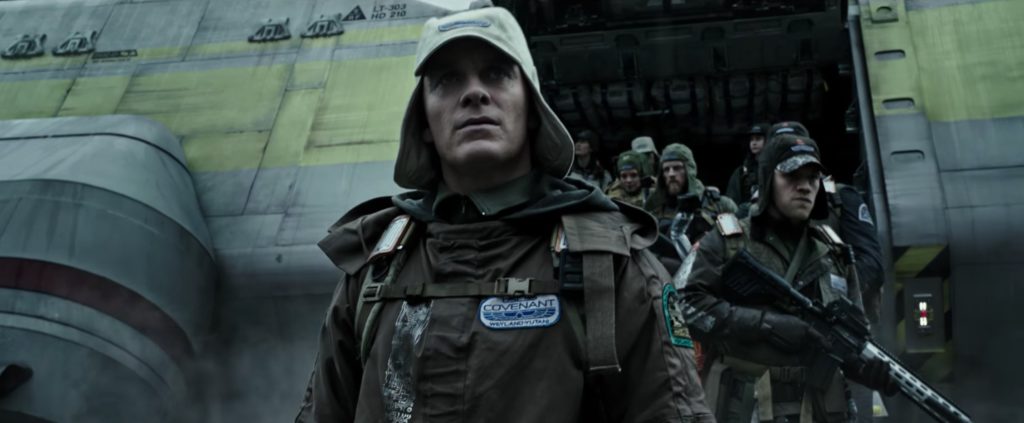
While going through scheduled computerized and mechanized motions of deploying giant wind sails, the ship falls victim to a space storm, thus sounding red alert, awakening the slumbering crew inhabitants so they can man their stations and take manual control of the situation. (It doesn’t appear that the future planetary residents were disturbed in their slumber.) Unfortunately, Branson, the ship’s captain, is the first to die as his sleep chamber is stuck and he is basically incinerated. This, of course, sets the stage for the emotional pitfalls that come when everyone is a couple in a relationship, as his wife Daniels, an officer on the ship, is now devastated by his loss.
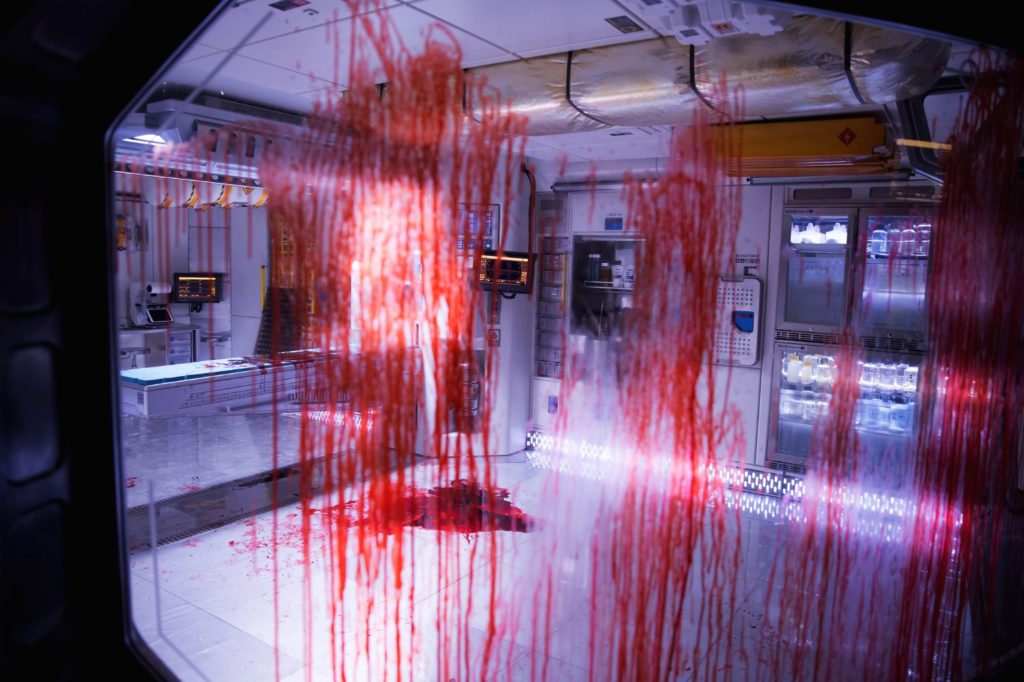
In addition to Daniels’ fractured emotional status, the captain’s death now places second-in-command Christopher in the captain’s chair. Never could there be a more inappropriate person to captain a mission of this magnitude. A man of faith, from the get-go he is at odds with the rest of the crew from a philosophical standpoint, but Christopher is also spineless, insecure and mamby-pamby about what being a captain entails.
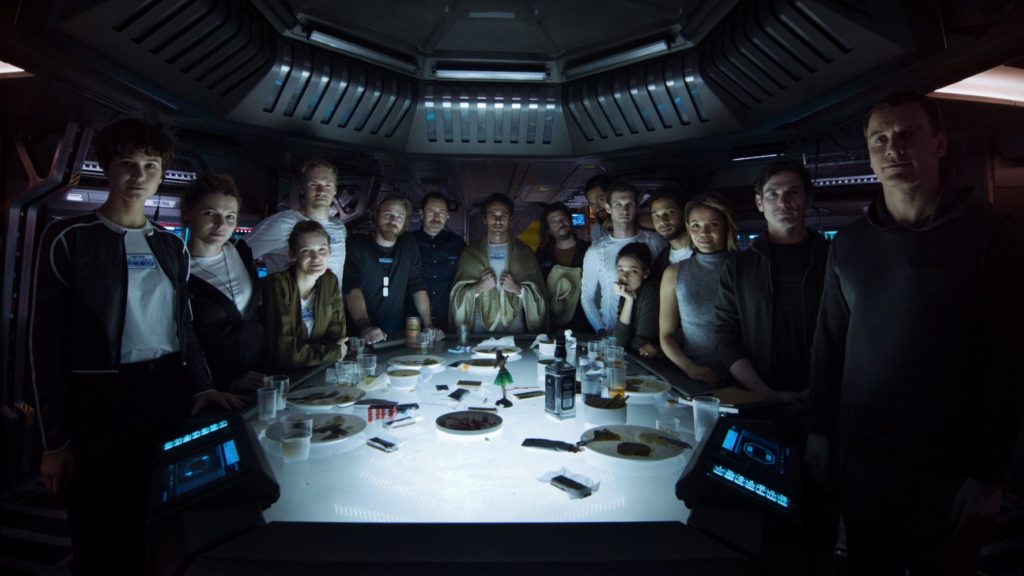
Rather than return to cryosleep, it is decided that the crew will remain awake and carry-out their regular duties manually. But Christopher’s first judgment call comes when radio signals are heard; radio signals which are playing John Denver’s “Take Me Home Country Roads.” Do they proceed on their mission to Origae-6 or locate the source of the signal? Needless to say, they opt to locate the signal and then, on discovering it is coming from a planet much closer to them than six-years out, decide to go to the surface and investigate.

With the Covenant’s pilot Tennessee and a few other crew left on the Covenant, Christopher, Faris (Tennessee’s wife), Daniels, Lope, and Walter, along with a few others head down to the planet. Suspiciously, a space storm separates the Covenant from the planet, making the transport to the surface quite dangerous with only intermittent communication abilities.

The planet is beautiful, beyond imagination. Mountains, lakes, rivers, greenery. Wheat is growing. But something doesn’t sit right, especially when crew start falling ill with creatures bursting from their bodies and mayhem and madness ensuing. But then a savior appears. David. And he too looks just like Michael Fassbender, er, Walter.
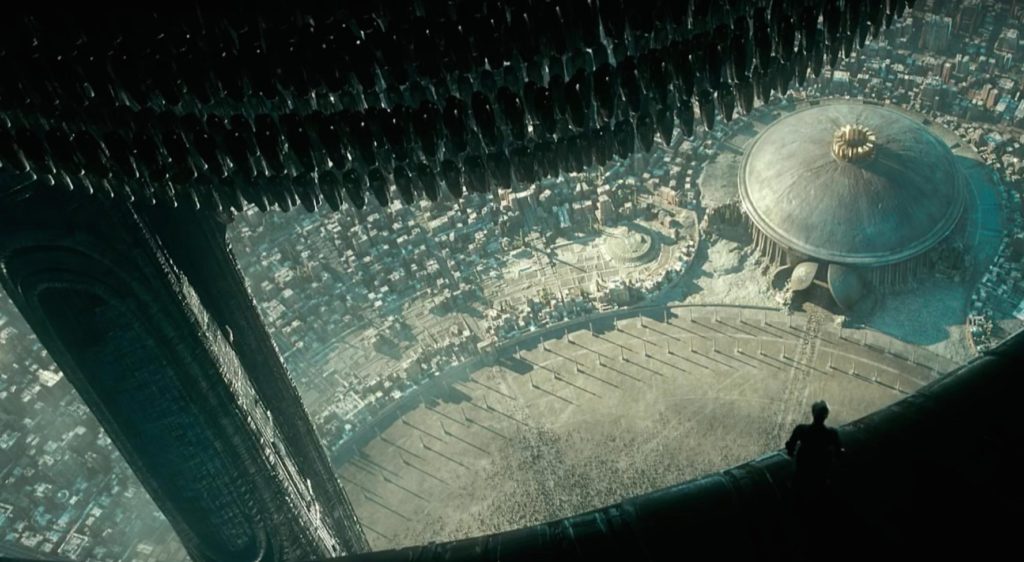
Losing crew members, caught in the storm, communications down, and suspicions rising with every passing moment, thanks to exchanges between Walter and David we slowly learn the alleged fate of the Prometheus’ Elizabeth Shaw, the history of the planet and the extinction of a massive thriving civilization, and how David has survived amidst these creatures running amok. But there’s another creature even more deadly than the ones killing people; it’s a creature playing God.

Michael Fassbender is nothing short of mesmerizing in a dual performance as David and Walter. Initially leaning on vocal accent and hair length as means to differentiate the two, once David has cleaned himself up and cut his hair to match that of Walter, it falls to Fassbender’s skills of subtlety to tell the tale and establish the core philosophies and character traits of each for what proves a chilling game of cat-and-mouse but with the stakes being that of life and death. With Walter being a later model than David and a bit more mechanical in thought and deed (emotion just doesn’t work with synthetics, or sometimes even with people), Fassbender gives David more fluidity with physicality and verbal skills. For every bit of understanding and empathy we see in Walter, there is an equal amount of diabolical and maniacal behavior in David. And there is also some humor, albeit infrequent, thanks to some clever double entendre tongue-in-cheek dialogue courtesy of John Logan and Dante Harper.

She may not be Sigourney Weaver or Ellen Ripley, but Katherine Waterston is a powerhouse as Daniels. Although short on emotional resonance in scenes surrounding the loss of Daniels’ husband – a cameo by James Franco, nonetheless – Waterston stands out with physicality in the action-oriented scenes; and there are plenty. She brings a bristling quality to the table when going toe-to-toe with Billy Crudup’s Christopher that is not only welcoming, but puts the audience and the crew of the Covenant in the position of rooting for Daniels to become captain. More intimate scenes with Fassbender’s Walter showcase Waterston’s range (and some lovely undertones within the script) as Daniels and Walter bond on a personal level of connection, which also lends to giving Walter a bit more humanity than what his generation of synthetic is supposed to have.

Speaking of Billy Crudup, what can I say. Christopher Oram is a weak captain. How he would make the hierarchy in the chain of command is a mystery. How Crudup was cast in the role is a mystery as his talents are somewhat wasted here. Crudup has a lot to offer in terms of emotional gravitas and fortitude in his performances and with this character, that falls by the wayside. Be Christopher faith-based or science-based, there is no conviction within the design of this character to satisfy any audience. Disappointing is the wasted opportunity by the screenwriters to delve more deeply into Christopher’s background of faith and set-up the science versus faith debate within the story structure as a natural segue with the god-devil complexity of Walter and David.

Supporting players Amy Seimetz as Faris and Danny McBride as Tennessee are two of the standouts on every level. Emotionally charged, strong, resonant. McBride, in particular, plays against his patented comedic type and by the third act has you on the edge of your seat wanting to see more from him. Similarly, Demian Bichir does not disappoint as Lope.
Don’t overlook the opening sequence and the uncredited appearance by Guy Pearce as Peter Weyland. An exquisite sequence on every level showcasing Fassbender and Pearce.
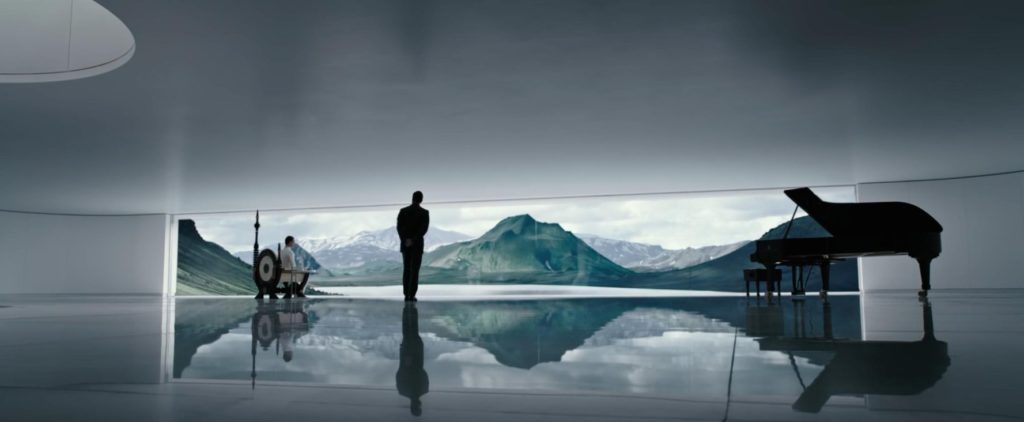
The strongsuit of the script by John Logan and Dante Harper is the filling in the blanks and picking up the pieces of the franchise after “Prometheus.” Also, discussions on a synthetic embracing emotion and appreciating art and science and spirituality open up new areas for exploration and thought not only after the film’s end, but into the next two films. . .especially given the totally wicked and twisted surprise ending of ALIEN: COVENANT.

But the real beauty of ALIEN: COVENANT comes from cinematographer Dariusz Wolski. Wolski was introduced to the Alien world with “Prometheus” and let’s just say it again: cinematography was the best part of the film. It is again with ALIEN: COVENANT. Beauteous is an understatement when it comes to Wolski’s lighting. With much of the film in a cavernous area either cloaked in inky blue-blacks or candlelight bouncing off weathered stone walls, the result is a master class in visual storytelling. Ship interiors gleam with reflective stainless steel surfaces. The beauty of the greenery of the planet’s surface contrasted with the remains of the ancient civilization now destroyed with nothing left but blackened charred bodies frozen crouched in fear in a coliseum-like arena glisten in the night. The opening sequence between Fassbender and Pearce is a metaphoric white-on-white pristine purity akin to heaven and God. A big shout-out to production designer Chris Seagers whose work creates a perfect palette of design for Wolski.
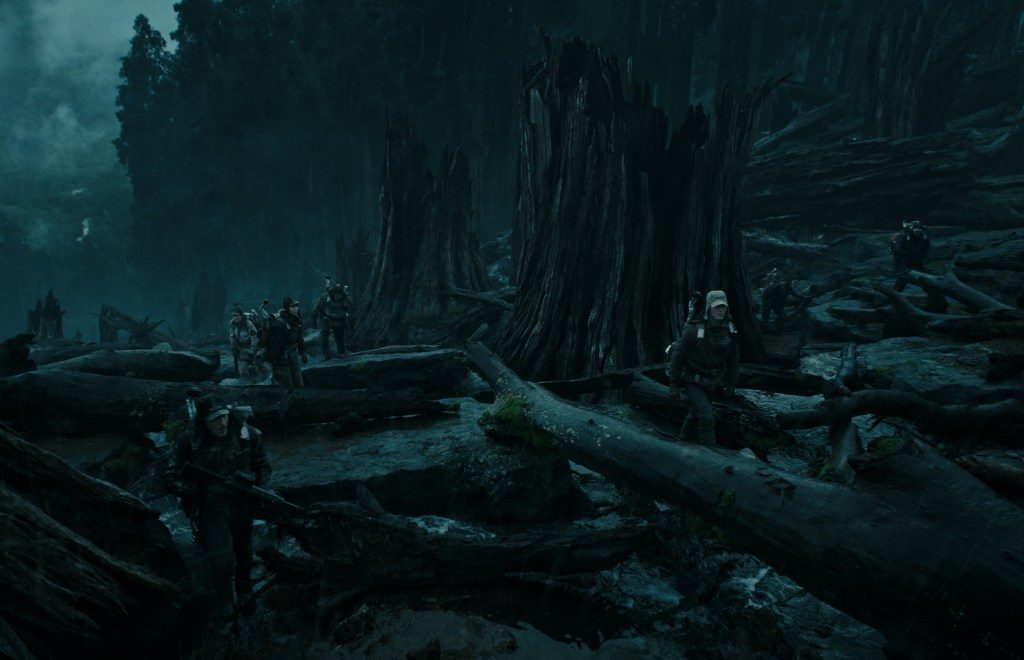
Thankfully franchise fans will rejoice at the sight of their favorite face-huggers which don’t look a day older than they did in 1979, in fact, they look like a bit of Botox may have helped give them an even sleeker shinier creepy look. But where CGI and special effects really earn their pay is with the malevolent killers, the Xenomorphs, and with the more humanoid Neomorphs, the latter new to the franchise. Each is as stunning as the other and crucial to the story and the legacy as a whole, particularly the Neomorphs who provide backstory and origin. And yes, blood abounds, and in some very unusual places.

Despite some of the shortcomings within the story itself, ALIEN: COVENANT has provided the franchise and its mythology with a necessary infusion of fresh meat for the future.
Directed by Ridley Scott
Written by John Logan and Dante Harper
Cast: Michael Fassbender, Billy Crudup, Katherine Waterston, Danny McBride, Demian Bichir, Guy Pearce (uncredited) and James Franco (uncredited)












